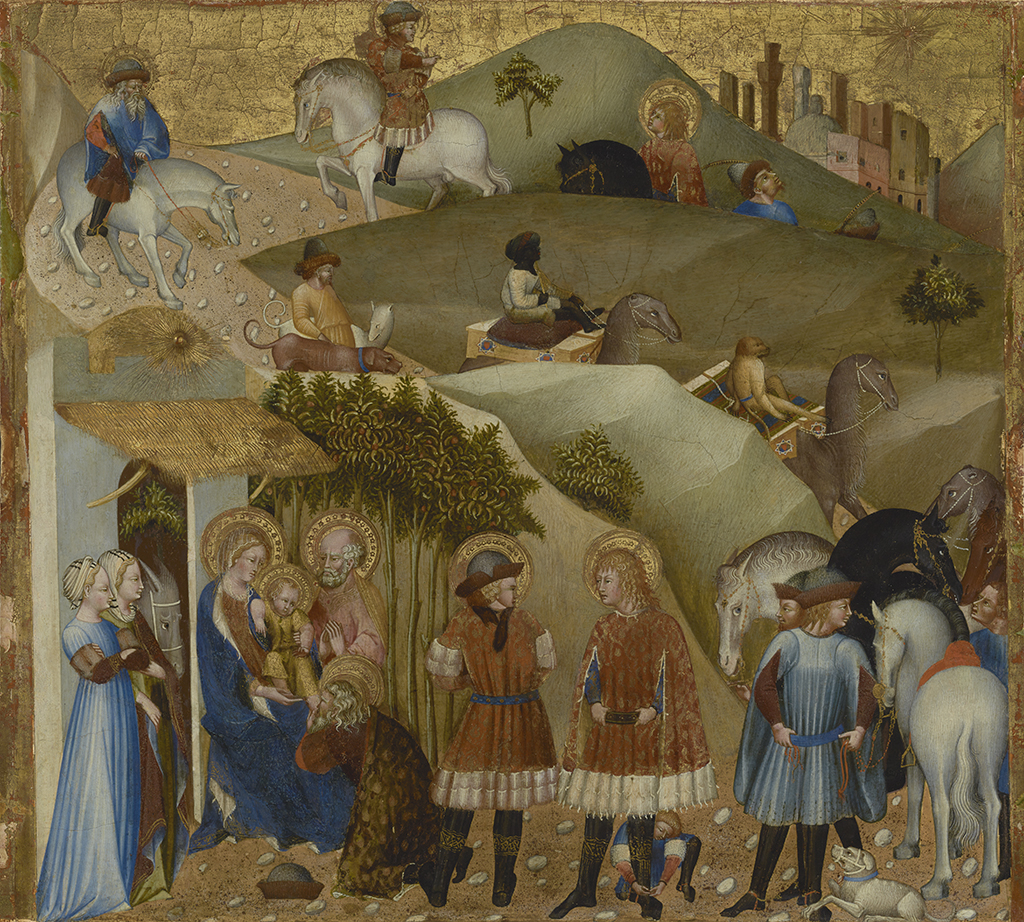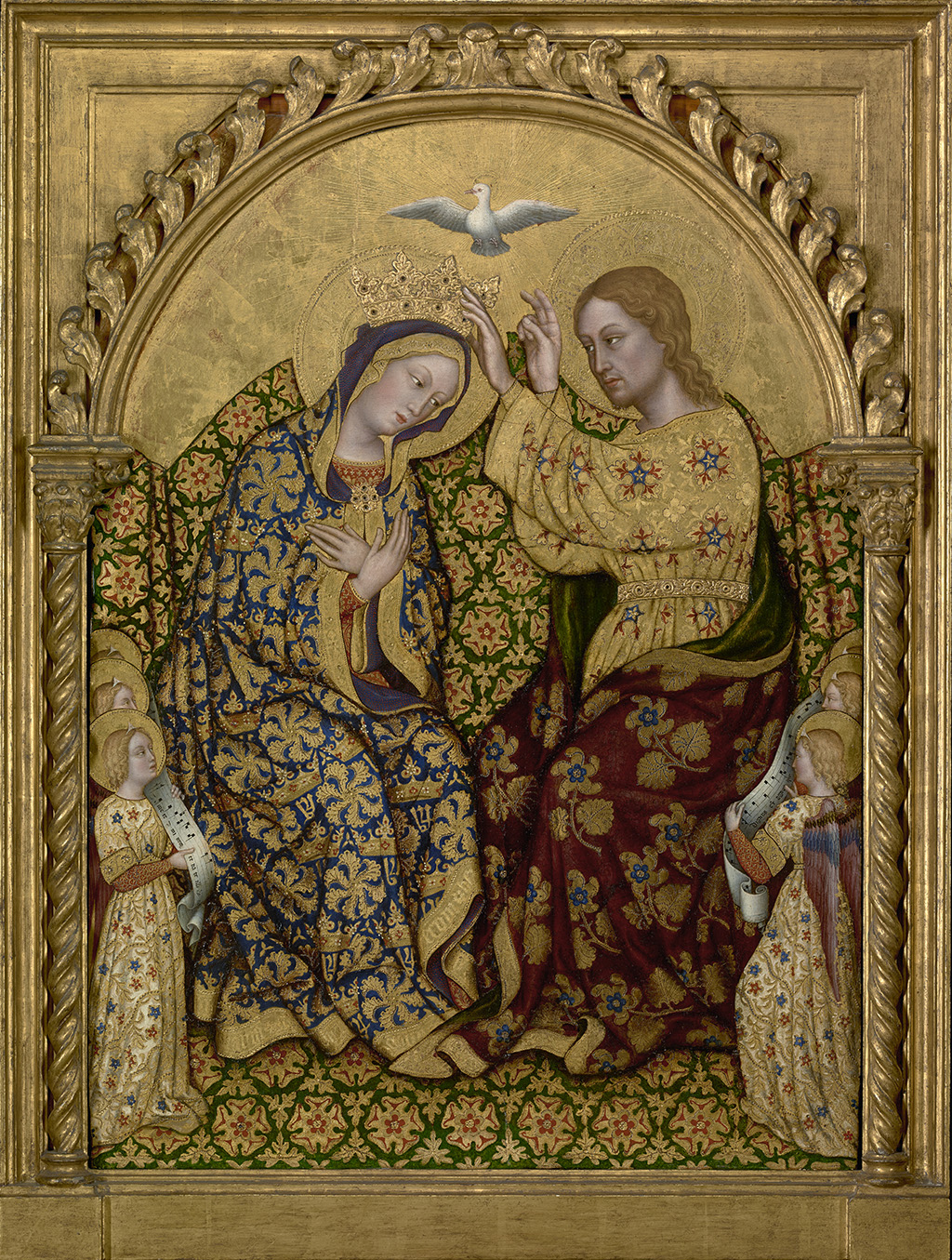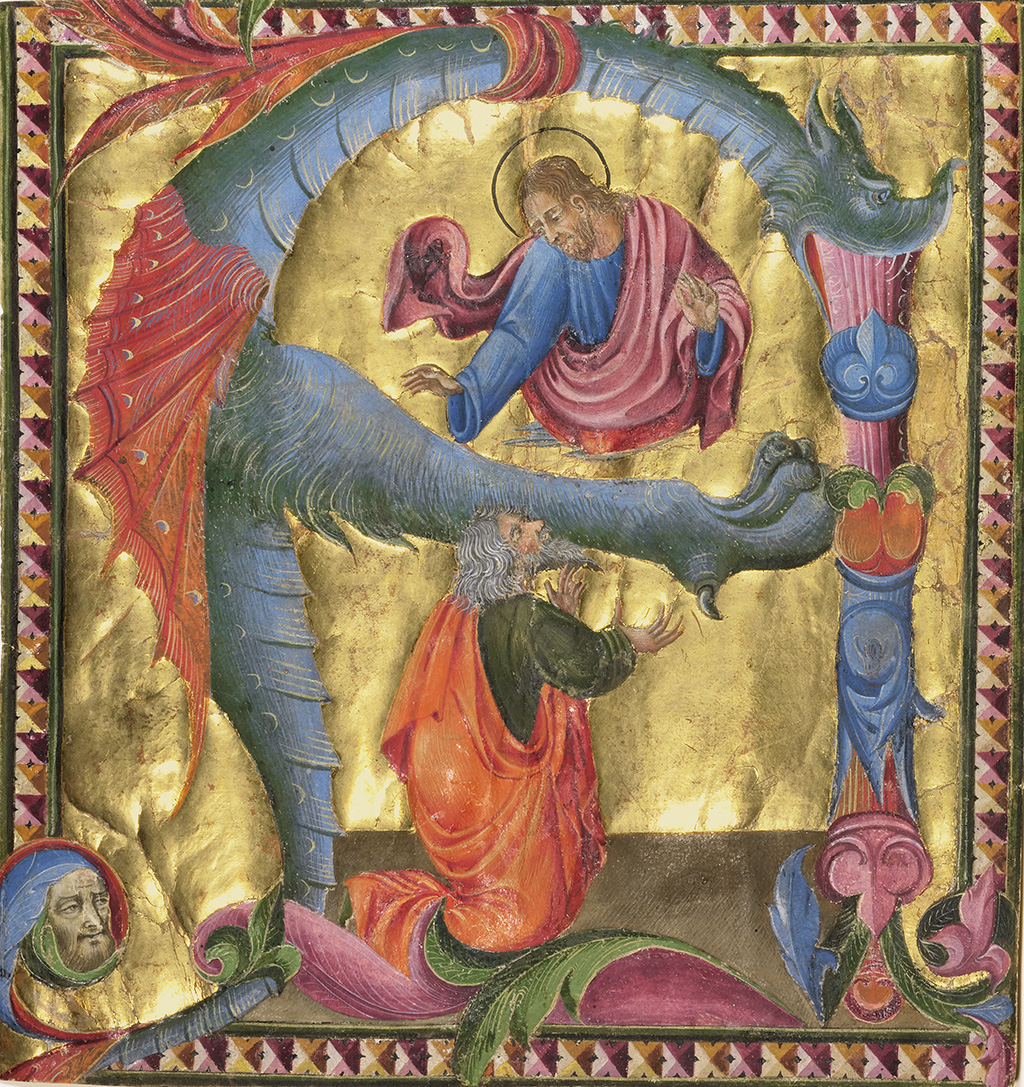J. PAUL GETTY MUSEUM
October 11, 2016 –January 8, 2017
Clik here to view.

Manuscript illuminator and panel painter Giovanni di Paolo (about 1399–1482) counts as one of the most distinctive and imaginative artists working in Renaissance Siena, Italy. The Shimmer of Gold: Giovanni di Paolo in Renaissance Siena, on view October 11, 2016 through January 8, 2017 at the J. Paul Getty Museum at the Getty Center, brings together several examples of his brilliantly colored paintings on both panel and parchment, including the work that scholars consider to be the artist’s masterpiece.
The exhibition centers on Giovanni’s most important commission, the Branchini Altarpiece, a multi-panel polyptych completed in 1427 for the Branchini family chapel in the church of San Domenico in Siena. The exhibition reunites—for the first time since it was dispersed sometime after 1649—the glorious, large central panel, representing the Virgin and Child surrounded by seraphim and flowers, with the altarpiece’s four surviving predella panels, smaller narrative paintings that decorated the lower register of the altarpiece.
“This exhibition had its beginnings, like many others at the Getty, in the conservation studio when a small panel painting by Giovanni di Paolo came to the Museum in 2012 for treatment thanks to the generosity of our Paintings Council,” says Timothy Potts, director of the J. Paul Getty Museum. “This opportunity gave our conservators and curators the chance to study the panel, compare it to other works by the same artist, and eventually develop an exhibition that presents Giovanni’s art in all its richness and complexity.”
The signed and dated central panel, the so-called “Branchini Madonna,” on loan from the Norton Simon Museum in Pasadena, was the only portion identified as part of the altarpiece until 2009, when scholars in Europe connected it with other works. When asked about the exhibition, Norton Simon Museum President and CEO Walter Timoshuk said, “The Getty Museum has presented a wonderful opportunity to learn more about our ‘Branchini Madonna,’ a highlight from our early-Renaissance collection, and we are delighted to see it exhibited in this revelatory way.”
The team at the Getty recently had the opportunity to study the panel from the Norton Simon when it came to the Museum for conservation, along with a small predella panel representing the Adoration of the Magi, which had been loaned for study and treatment by the Kröller-Müller Museum in the Netherlands. Technical analysis is still ongoing, but it seems to support what scholars had already suspected: that the Adoration of the Magi panel was indeed part of the Branchini Altarpiece, as were three other predella panels in the collection of the Pinacoteca Nazionale of Siena. All four surviving predella panels (there was a fifth panel, which is yet to be found) will be gathered together in the exhibition. “Other missing parts of the polyptych have not yet been found but technical analysis may help identify other works in the future,” says Davide Gasparotto, senior curator of Paintings at the J. Paul Getty Museum and co-curator of the exhibition. Adds Yvonne Szafran, senior conservator of Paintings Conservation at the Getty Museum and co-curator of the exhibition: “Scientific analysis of art is becoming extremely sophisticated, and technological advances allow us to examine paintings more comprehensively than ever before. With the help of our colleagues at the Getty Conservation Institute, we can now discover material information about paintings that was previously hidden, in this case revealing links between panels that were separated long ago.”
The exhibition also brings into focus the highly decorative and richly colored painting technique, which included extensive use of gold leaf, that peaked in Italy in the early 15th century, and of which Giovanni di Paolo was a celebrated master. Over the course of his lengthy career, Giovanni received prestigious commissions from private individuals and families, patrons such as the Pope, guilds, and numerous religious orders, including the Dominicans and Augustinians. His brilliantly colorful paintings on both panel and parchment reveal him to be an artist whose style drew uniquely from Sienese and Florentine models.
Giovanni di Paolo: The Adoration of the Magi
The Coronation of the Virgin, about 1420, Gentile da Fabriano, tempera and gold
Some scholars have suggested that the young Giovanni di Paolo may have worked on the Branchini Altarpiece with Gentile, who would have influenced Giovanni di Paolo’s technique, as many similarities in their painting methods are apparent. The sophisticated layering of paint and gold as well as the careful execution of elaborate and fine decorative details is evident in the work of both artists, and each were masters at depicting the luxury brocaded textiles and animal furs that were so valued during this period.
In the exhibition, leaves and cuttings from choir books illuminated by Sienese and Florentine artists underscore the shared working methods, itinerant travels, and – in particular – the prevalent use of gold in the religious imagery of the period; as well as explore Giovanni di Paolo’s influence on the painted arts in Renaissance Tuscany. “The illuminated choir book is one of the most significant art forms to demonstrate the combined efforts of multiple artists, a theme demonstrated through a grouping of miniatures lent by the Burke Family Collection and the Ferrell Collection,” says Bryan C. Keene, assistant curator in the department of Manuscripts at the Getty Museum, who also co-curated the exhibition.
The Shimmer of Gold: Giovanni di Paolo in Renaissance Siena will be on view October 11, 2016 – January 8, 2017 at the J. Paul Getty Museum. The exhibition is generously supported by the Museum’s Paintings Council who not only sponsored the conservation work on the predella panel from the Kröller-Müller Museum, but also provided funding for the exhibition.
Complementing the exhibition is a special show at the Italian Cultural Institute in Westwood. Unknown Monk– on view from October 7 through November 11, 2016 – features a series of small panels and a large oil painting on canvas which visually references the Giovanni di Paolo altarpiece by contemporary Italian artists Alex Folla and Elena Trailina.
Also on view at the Getty Center are The Art of Alchemy at the Getty Research Institute (October 11, 2016 –February 12, 2017) and Alchemy of Color in Medieval Manuscripts at the J. Paul Getty Museum (October 11, 2016 –January 8, 2017). Drawn primarily from the collections of the Getty Research Institute and the J. Paul Getty Museum The Art of Alchemy, portrays the critical impact of this arcane subject on artistic practice and expression from Greco-Egyptian antiquity to medieval Central Asia, and from the Islamic world to Europe during the Enlightenment and beyond. The Alchemy of Color in Medieval Manuscripts examines the significance of color, which was understood in the Middle Ages in terms of its material, scientific and medicinal properties.
Giovanni di Paolo (Italian, about 1403 - 1482)
The Presentation in the Temple, 1427
Tempera and gold on panel
Panel: 50 × 50.8 × 3.3 cm (19 11/16 × 20 × 1 5/16 in.)
Polo Museale Regionale della Toscana
Repro Credit:
Giovanni di Paolo (Italian, about 1403 - 1482)
Initial A: Christ Appearing to David, about 1440
Tempera colors, gold leaf, and ink on parchment
Leaf: 20 × 18.6 cm (7 7/8 × 7 5/16 in.)
The J. Paul Getty Museum, Los Angeles, Ms. 29, recto
Giovanni di Paolo (Italian, about 1403 - 1482)
The Flight into Eygpt, 1427
Tempera and gold on panel
Panel: 50 × 50 × 1.6 cm (19 11/16 × 19 11/16 × 5/8 in.)
Object Credit:
Polo Museale Regionale della Toscana
Repro Credit:
Giovanni di Paolo (Italian, about 1403 - 1482)
The Crucifixion, 1427
Tempera and gold on panel
Panel: 49.5 × 52.2 × 1.6 cm (19 1/2 × 20 9/16 × 5/8 in.)
Polo Museale Regionale della ToscanaRepro Credit:
Polo Museale della Toscana - Pinacoteca Nazionale di Siena 






